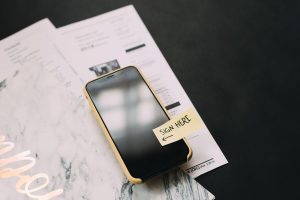 The best way to learn fast and cheap is to come up with and build a prototype. The hypothesis validation process of a business inevitably involves presenting your idea to future clients. For this, nothing better than “something” that simulates, represents, and allows users to interact, experiment, analyze, and use the entrepreneur’s idea or the company. The way to put ideas into practice is to build prototypes.
The best way to learn fast and cheap is to come up with and build a prototype. The hypothesis validation process of a business inevitably involves presenting your idea to future clients. For this, nothing better than “something” that simulates, represents, and allows users to interact, experiment, analyze, and use the entrepreneur’s idea or the company. The way to put ideas into practice is to build prototypes.
When it comes to prototypes, our imaginations fly to futuristic cars, complicated gadgets, or robots. But in reality, that kind of “prototype” comes too close to the final product. This article does not refer to that type of prototype, but the prototype is made of cardboard, adhesive tape, colored pencils, and a lot of imagination. Depending on the type of idea, product, service, web, or mobile applications, there are classes of prototypes more suitable than others.
Table of Contents
Cardboard Prototype
Ideal for product prototypes due to the ease of molding, cutting, and, at the same time, the rigidity and low weight that cardboard allows. Without a doubt, practically any product idea can be brought to life using this material.
3D prototype
Nowadays, it is possible to make a 3-dimensional drawing and turn it into a product through a 3D printer, capable of turning the product that has been designed on the computer into reality. They are very useful prototypes to check movements, interference, physical appearance, and behavior. It is necessary to know how to draw in 3D and have access to a 3D printer to carry them out. It is used for product prototypes.
Why make a Prototype?
A prototype allows the alignment of all the expectations about what the user wants and the entrepreneur proposes. A prototype is made to get out of the world of ideas and make them tangible. It also allows us to co-create with the user to measure if we are reaching the need or the proposed problem. The most important thing to prototype is to get out of subjectivity and make ideas tangible. This process aims to align the expectations both with the work team and with the users of what we want to propose to our chosen market.
Once the product has been created, you will need to also look into the responsibilities of being a product owner. In this instance, you will need to look at product owner roles and responsibilities, which will give you a more detailed insight.
5 Tips for Testing a Prototype
It is necessary to be very aware of the user when testing or testing the prototype; this will allow the entrepreneur to have all the first-hand information on how to improve his product from the user’s hand.
- Let the user be the expert
- Have me show you how you use the product
- Asking him why he did things that way
- Document all feedback and lived experience
- Have multiple users who can validate your prototype
It is essential to build a prototype with imperfections and with minimal resources so that the user is the main actor in improving the product. This allows us to find the best feedback that allows for enhancing the whole process of Building – measuring, and learning. This will lead you to a more prosperous future.